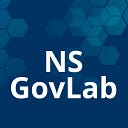By Alex Sotiropoulos, Communications Assistant, NS GovLab
Throughout the process of NS GovLab, the word “prototyping” has been an important process in guiding our fellows toward creating an innovative solution for the aging population in Nova Scotia.
Prototyping is a rough draft of a small concept you are gaining feedback on from your end users. Prototypes should be an accurate representation of what you’re producing but should be relatively quick and cheap to create. This is the quickest way for your end user to experience your idea.
There are a few important things to know about prototyping:
- It isn't a linear process: When creating your prototype, you will fail. Failing is a good thing. You are gaining insight on what isn’t going to work and what can better your product or service you are testing. Most people are not successful on the first attempt. Prototyping is a cycle of creating, receiving feedback from users, making small adaptations, and repeating.
A famous case of failed prototypes that eventually led to success is James Dyson- the creator of the Dyson vacuum.
It look James Dyson 15 years and 5127 prototypes to make the first successful bagless vacuum. This means that James would have created an average of 342 prototypes a year.
If James Dyson created 342 prototypes a year, he would have just over a day on each one. He realized that creating the perfect vacuum requires a lot of testing and adaptations as you go.
Through perseverance and continuing to make adaptations, he made the perfect vacuum. If he had given up at 3500 or 5126 prototypes, where would the Dyson vacuum be today?
2. Prototyping is a small experiment: You don’t need or want to develop the full concept that all users will benefit from. Working on a small idea is easy to modify and learn from.
The development of the Google Glass is an example of testing small slices of the whole concept. By using cheap materials, such as coat hangers and plastic film, they were able to project the actions of the digital tool.
Once the actions of the prototype were complete, the team moved onto the weight of the Google Glass. The physical prototype was developed in 45 minutes using office supplies that cost relatively nothing. The weight was tested to determine the amount of weight placed on the face and ears. This was created with materials available in their office that weighed the same as the real materials they would be using.
Testing was successful because they worked on a small slices of the full concept rather than creating the whole idea and testing it all at once.
We all want to invent the next big thing. We all want to succeed but we can’t be afraid of failure. It would be optimal to come up with an idea and it be successful after the first attempt, but in most cases it won’t turn out that way.
The phrase, “Rome wasn’t built in a day” wouldn’t be famous if good things didn’t take a lot of time and effort.
As Tom Chi, one of the team members for developing the Google Glass says, “doing is the best kind of thinking.”
Failing brings you one step closer to success.
